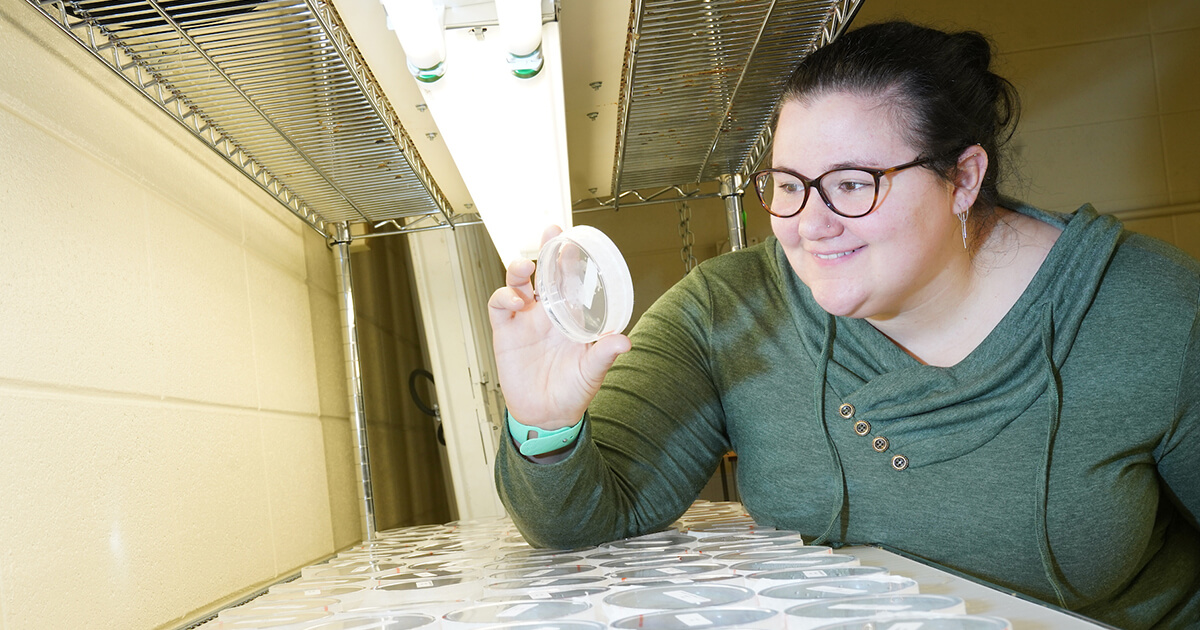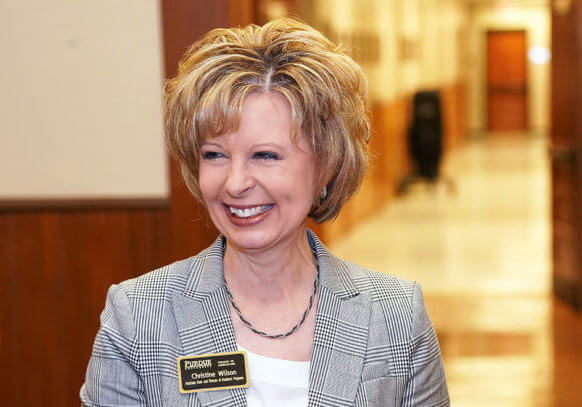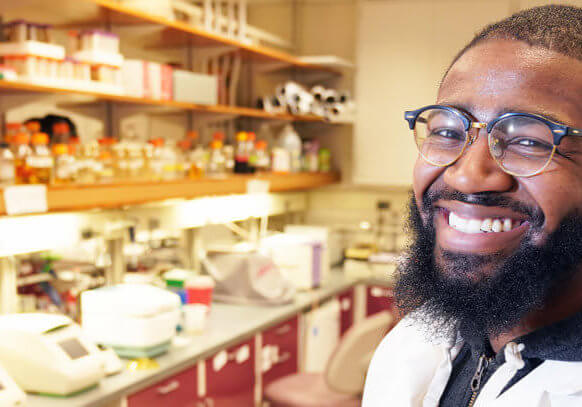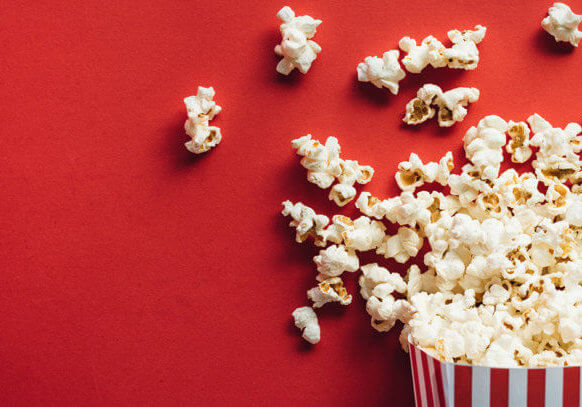"I
love trying to figure out things that nobody knows,” said Rachel McCoy, a doctoral candidate in Horticulture and Landscape Architecture who will defend her dissertation next month.
McCoy’s search for a postdoc is underway as she works toward her goal of becoming a professor at a small university.
At the University of Evansville, an undergraduate ethnobotany course opened McCoy’s eyes to the variety of ways people interact with plants. After earning an undergraduate degree in biology, McCoy was accepted into the Purdue University Interdisciplinary Life Science Program (PULSe).

McCoy appreciated opportunities to rotate through labs to experience different aspects of plant science. “The interdisciplinary nature of plant science at Purdue makes it a great place to study.”
In 2016, she joined the lab of Joshua Widhalm, assistant professor of horticulture. “He’s always supportive of my goals,” said McCoy. “My advisor and I have been working together for a long time, so we communicate well, which really is important in graduate research.”
The Widhalm lab focuses on plant allelochemicals, natural products released into the environment that influence the growth and development of other species.
Phylloquinone is needed by humans as vitamin K and used by plants for photosynthesis. “We need to get phylloquinone from our diets, from leafy greens,” explained McCoy. “We mostly understand how plants use it in photosynthesis, but we don’t fully understand how plants make it.”
McCoy discovered that black walnut trees make juglone, an allelochemical harmful to other plants, using part of the same pathway that plants use to make phylloquinone. Through her research, she hopes to better understand the extent to which the pathway is used to make different compounds.
In spring 2018, McCoy was awarded a prestigious USDA NIFA-AFRI predoctoral fellowship. Purdue’s Graduate Student Senate gave her its 2018 Above and Beyond award for her initiative during two years as senator for Horticulture and Landscape Architecture.
“As grad students, we can get so caught up in our research that we don’t think about what’s going on outside the lab or our department, and I think it’s important that someone is thinking about that,” said McCoy.
Not in Kansas anymore, Associate Dean Wilson returns to Purdue
“The most powerful leadership tool you have is your own personal example,” said Christine Wilson, quoting Purdue alumnus John Wooden. Wilson, the newly appointed associate dean and director of academic programs for the College of Agriculture, thought her life would follow a similar path to Wooden’s, but as Wilson noted, “Sometimes plan B is better than plan A.”
Wooden taught high school English, but he is better-known as the first athlete inducted into the Basketball Hall of Fame as both a player and a coach. As a teenager, Wilson was determined to earn a scholarship playing basketball, with the goal of becoming a high school math teacher and basketball coach.
Read Full Story >>>MANRRS helps groom entrepreneur for life after Purdue
“I didn’t want to come to Purdue. I just wanted to get out of the Midwest,” said Brandon Hunter, who grew up in southern Illinois. “I saw myself moving somewhere far away like California, Georgia or Pennsylvania.”
Hunter first heard about the MANRRS-Purdue chapter through Pamala Morris, assistant dean and director of multicultural programs, and Myron McClure, assistant director of student recruitment and retention.
Read Full Story >>>What’s under the shell of this popular snack?
No country grows or consumes more popcorn than the United States and only one state, Nebraska, produces more popcorn than Indiana. Consequently, it’s surprising that in 2019, only 75,000 of Indiana’s 5 million corn acres contained popcorn.
The hard outer hull of popcorn, called the pericarp, explains why 1.5 percent of the state’s corn pops while none of the rest can.
Read Full Story >>>Not in Kansas anymore, Associate Dean Wilson returns to Purdue
“The most powerful leadership tool you have is your own personal example,” said Christine Wilson, quoting Purdue alumnus John Wooden. Wilson, the newly appointed associate dean and director of academic programs for the College of Agriculture, thought her life would follow a similar path to Wooden’s, but as Wilson noted, “Sometimes plan B is better than plan A.”
Wooden taught high school English, but he is better-known as the first athlete inducted into the Basketball Hall of Fame as both a player and a coach. As a teenager, Wilson was determined to earn a scholarship playing basketball, with the goal of becoming a high school math teacher and basketball coach.
Read Full Story >>>MANRRS helps groom entrepreneur for life after Purdue
“I didn’t want to come to Purdue. I just wanted to get out of the Midwest,” said Brandon Hunter, who grew up in southern Illinois. “I saw myself moving somewhere far away like California, Georgia or Pennsylvania.”
Hunter first heard about the MANRRS-Purdue chapter through Pamala Morris, assistant dean and director of multicultural programs, and Myron McClure, assistant director of student recruitment and retention.
Read Full Story >>>What’s under the shell of this popular snack?
No country grows or consumes more popcorn than the United States and only one state, Nebraska, produces more popcorn than Indiana. Consequently, it’s surprising that in 2019, only 75,000 of Indiana’s 5 million corn acres contained popcorn.
The hard outer hull of popcorn, called the pericarp, explains why 1.5 percent of the state’s corn pops while none of the rest can.
Read Full Story >>>

